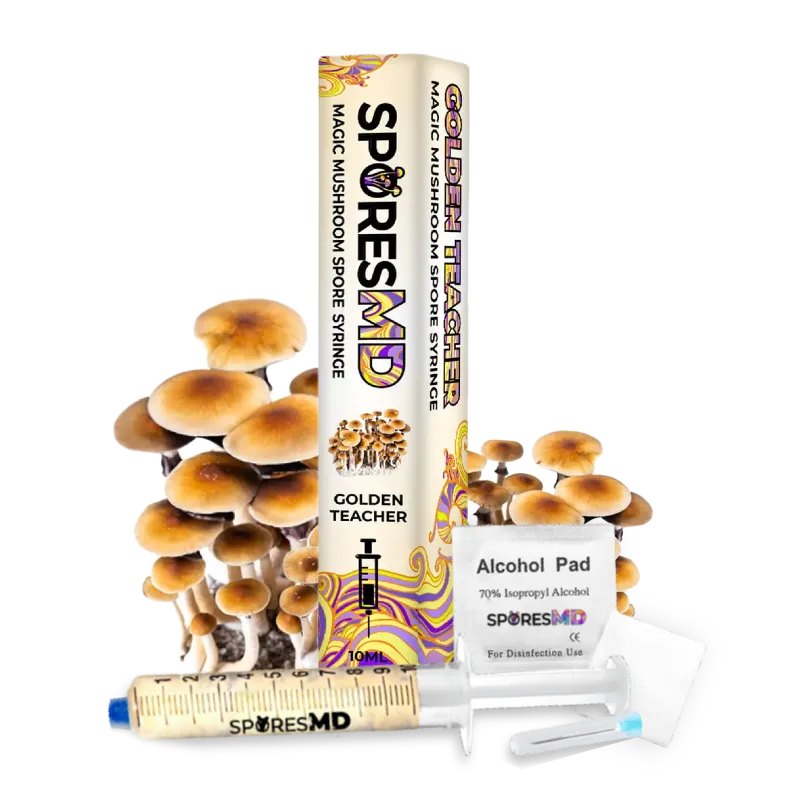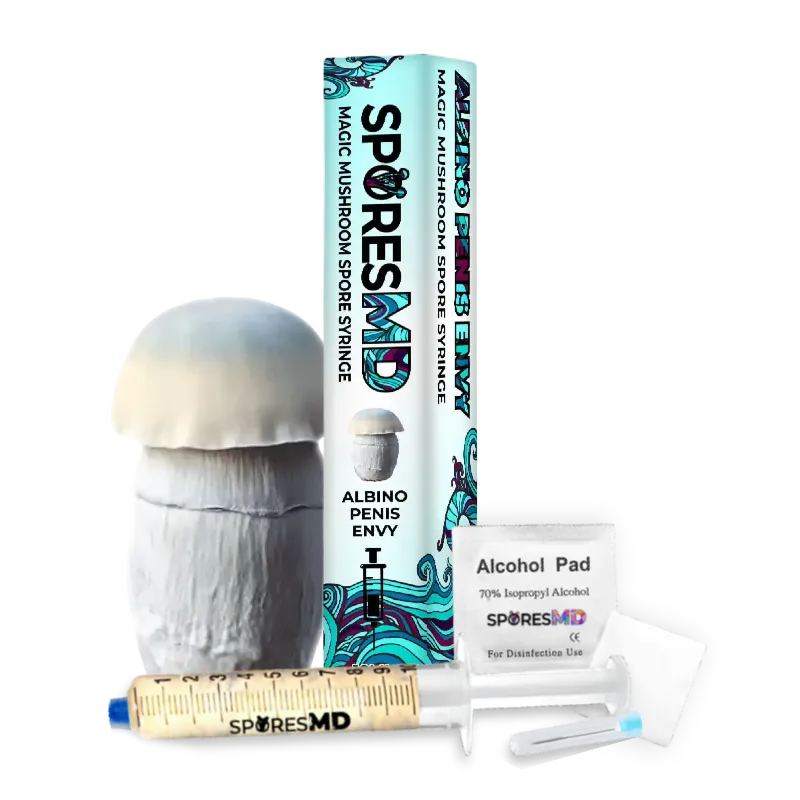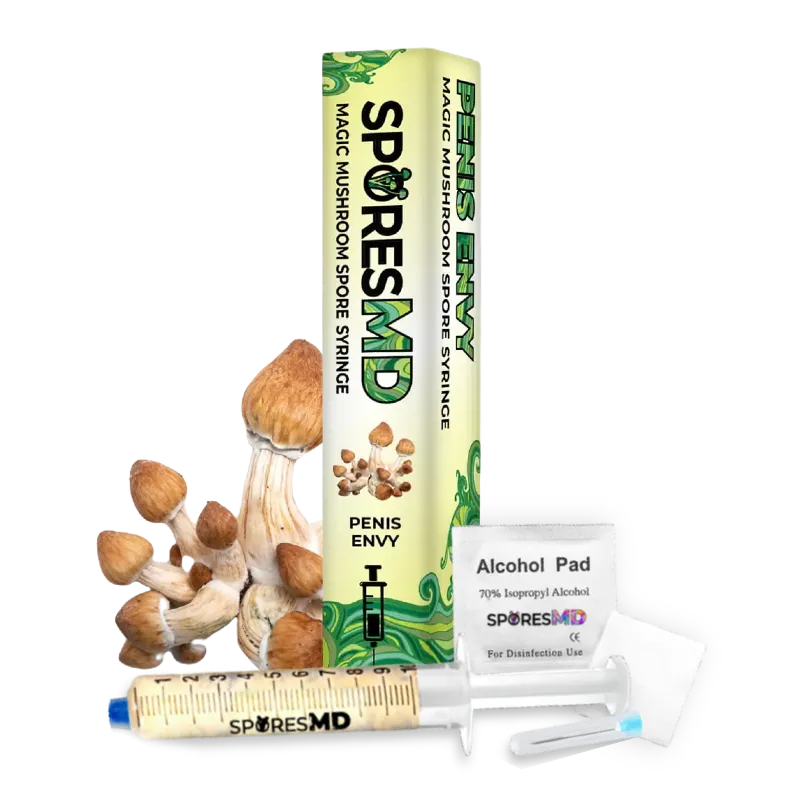Mushroom spores are tiny. Almost invisible. But they spark curiosity. Can you touch them without worry? The short answer: yes. Most mushroom spores and even the fungi themselves are safe to handle.
Delving deeper, harvesting spores from mushrooms is a fascinating process, involving careful cutting and collecting without damaging these microscopic particles. For those intrigued by the world of fungi, touching and even tasting (with caution) becomes part of the exploration. Yet, myths persist about their safety. Let’s debunk these and provide you with the confidence to interact with mushrooms and their spores safely.
Key Takeaways
- Handling Mushroom Spores is Generally Safe: Most mushroom spores, and the fungi themselves, are safe to touch and handle, debunking common myths around their safety.
- Importance of Safety Precautions: Despite their general safety, it’s crucial to adopt safety measures like wearing masks and gloves to prevent potential health issues, such as respiratory problems or allergic reactions, due to spore inhalation.
- Role in Ecosystems: Mushrooms and their spores play vital roles in ecosystems, including decomposition, nutrient cycling, forming symbiotic relationships with plants, and bioremediation, highlighting the importance of respecting and preserving them.
- Varied Mushroom Types: The world of fungi includes a wide variety of mushrooms, from common edible types like Shiitake and Portobello to psychedelic strains with potential therapeutic benefits, each with specific spore handling guidelines.
- Educational Resources and Proper Gear Essential: Gaining knowledge from reliable sources such as SporesMD and using protective gear can make exploring the world of mushrooms and their spores both a safe and enriching experience.
- Legality and Safety with Psychedelic Spores: When dealing with psychedelic mushroom spores, always ensure adherence to legal guidelines and safety precautions to mitigate health risks and legal issues.
Understanding Mushroom Spores
Diving into the world of fungi, mushroom spores are both fascinating and complex. With the backdrop of their safety and the process of harvesting them fresh in your mind, let’s delve deeper into what these spores are and how they journey from one point to another. This understanding not only enhances your appreciation for mushrooms but also equips you with the knowledge to interact with them safely.
What Are Mushroom Spores?
Mushroom spores are akin to seeds in the plant world but come with their unique set of rules. These microscopic particles are the means by which mushrooms reproduce, carrying the genetic blueprint for a new fungal generation. Unlike seeds, spores are nearly invisible to the naked eye and are produced in vast quantities. A single mushroom cap can release billions of spores, a testament to the prolific nature of these organisms.
How Do Mushroom Spores Disseminate?
The journey of a mushroom spore from its point of origin to its new home is a tale of endurance and ingenuity. Mushroom spores disseminate through various methods, primarily relying on environmental forces such as wind and water. However, some species have evolved interactions with animals, hitching a ride on fur or feathers, to spread their genetic material far and wide. The design of a mushroom, especially those with gills, facilitates this dispersal process. As spores mature, they are ejected and carried away by even the slightest breeze, ensuring the survival and spread of their species.
Mushroom spores, while microscopic, play a colossal role in the lifecycle of fungi. Understanding these tiny particles provides a deeper appreciation for the complexity of mushrooms and the delicacy required when handling them. Whether you’re a seasoned mycologist or a curious newcomer, the world of mushroom spores is filled with fascinating insights waiting to be discovered.
The Risks of Handling Mushroom Spores
While mushroom spores might seem harmless, certain precautions are necessary when handling them to prevent potential health problems. Learn how to interact with spores safely by understanding the risks and controlling your exposure.
Potential Health Effects
When you handle mushrooms, hundreds of tiny spores can become airborne. If inhaled, these spores can lead to serious health issues:
- Coughing, Fever, Shortness of Breath: Common initial symptoms that can escalate quickly.
- Hypersensitivity Pneumonitis: A condition resulting from repeated exposure, causing lung inflammation.
- Asthma Attacks: For those with pre-existing conditions, spores can trigger severe reactions.
- Lycoperdonosis: A rare but severe response to inhaling large quantities of puffball spores.
Situations Leading to High Spore Exposure
Certain activities can increase your risk of inhaling mushroom spores. Here are a few situations to be mindful of:
- Foraging or Gardening: Disturbing soil or plants can release spores into the air.
- Indoor Cultivation: Spores can accumulate in poorly ventilated areas, increasing inhalation risks.
- Handling Old or Damaged Mushrooms: These tend to release more spores than fresh ones.
To mitigate these risks, adopt safety measures such as wearing masks, gloves, and ensuring proper ventilation. Wetting mushrooms before handling them can also reduce the number of airborne spores.
For individuals interested in growing or studying mushrooms, it’s crucial to educate oneself about the different types and their potential effects.
Safe Practices When Dealing with Mushrooms
Exploring the enchanting world of fungi requires more than just curiosity. Safeguarding your health is paramount when you’re handling or in the vicinity of mushroom spores. Don’t let their small size fool you; these spores can pose significant health risks. Below are essential safety tips for mushroom enthusiasts, whether you’re a forager or an indoor cultivator.
Mushroom Foraging and Spore Exposure
When embarking on mushroom foraging adventures, you’re directly exposed to an array of fungi and their spores. To minimize health risks:
- Wear Protective Gear: Always don a mask and gloves. This barrier prevents direct inhalation and contact with spores.
- Stay Informed: Learn about mushroom species from reliable sources like SporesMD. Knowledge of which mushrooms are safe to handle reduces risks.
- Wet Mushrooms Before Handling: Spritz water on mushrooms to limit spore release into the air.
Practicing these steps ensures you enjoy foraging while staying protected from potential spore-related respiratory issues.
Best Practices for Indoor Cultivators
Growing mushrooms indoors offers a controlled environment but comes with its own set of challenges, particularly spore exposure. Here’s how to stay safe:
- Ensure Proper Ventilation: Set up an exhaust fan or open windows to circulate air and disperse spores out of your cultivation area.
- Limit Spore Spread: Harvest mushrooms before they release spores. This timing is crucial to reduce airborne spores.
- Use High-Efficiency Particulate Air (HEPA) Filters: These filters can capture mushroom spores from the air, reducing your inhalation risk.
Indoor cultivators should also consider exploring safer mushroom varieties for cultivation.
By adhering to these practices, mushroom enthusiasts can enjoy their hobby without compromising their health. Whether you’re foraging in the wild or cultivating mushrooms at home, taking preventive measures to control spore exposure is essential. Stay informed, stay protected, and let your fascination with fungi flourish safely.
Recognizing and Managing Allergic Reactions
When diving into the world of mushrooms, it’s crucial to recognize and manage any potential allergic reactions to mushroom spores properly. Your safety and health should always be a priority.
Symptoms of Mushroom Spore Allergies
Mushroom spore allergies can manifest in various ways, depending on individual sensitivity. Being informed is your first step toward safety:
- Coughing: A dry, persistent cough might be your first clue.
- Fever: Look out for an unexplained rise in body temperature.
- Breathing Difficulty: Feeling short of breath can indicate a serious reaction.
- Asthma Worsening: Those with asthma might experience intensified symptoms.
If you’re around mushrooms, either while foraging outdoors or cultivating them inside, recognizing these symptoms early could be key to preventing more serious health issues.
Steps to Take After Exposure
If you suspect you’ve been exposed to mushroom spores and are experiencing symptoms, here’s a quick action plan:
- Seek Fresh Air: Move to an area with clean, uncontaminated air to minimize further inhalation of spores.
- Consult a Physician: Especially if symptoms persist or worsen. They might conduct tests, such as chest radiographs, to assess the situation.
- Rest and Hydrate: Give your body the chance to recover naturally from any mild reactions.
- Medication: Over-the-counter meds can alleviate symptoms like coughing and fever. In more severe cases, doctors may prescribe glucocorticoids.
- Avoid Further Exposure: Stay away from areas known for high mushroom spore concentrations until you fully recover.
Remember, knowledge is power.
Arming yourself with the right knowledge and tools is crucial when dealing with mushrooms and their spores. Always prioritize safety measures, and don’t hesitate to seek medical advice if you suspect an allergic reaction. Keep your mushroom experiences safe and enjoyable by staying informed and prepared.
Treatment and Prevention
Engaging with mushroom spores, while often safe, can introduce risks that necessitate informed treatment and prevention strategies. Below, delve into methods for addressing spore exposure and steps to avoid unnecessary contact, equipped with knowledge and resources to navigate this fascinating yet potentially hazardous aspect of mycology.
Medical Interventions for Spore Exposure
If you’ve inhaled or come into contact with mushroom spores leading to adverse effects, prompt action complements recovery. Here’s what to look for and how to respond:
- Seek Medical Attention: If symptoms like difficulty breathing, coughing, or skin irritation arise, consult a healthcare provider immediately. These symptoms could escalate without timely intervention.
- Diagnostic Tests: Expect comprehensive examinations including chest radiographs or CT scans to assess lung health, as spore inhalation may cause complications visible through these imaging techniques.
- Medication: Doctors often prescribe corticosteroids to reduce inflammation in the lungs or antifungal medications if a fungal infection is suspected. Following the prescribed treatment regime is crucial for recovery.
- Rest and Hydration: Supporting your body’s recovery through ample rest and staying hydrated is vital. Water facilitates the removal of toxins and can help alleviate symptoms.
Preventing Spore Inhalation and Contact
Prevention is your frontline defense against the potential hazards of mushroom spore exposure. Here are key strategies:
- Wear Protective Gear: Masks and gloves can significantly reduce your risk of inhaling or directly contacting spores. Ensure your mask is rated to filter small particles.
- Proper Ventilation: When handling mushrooms or spores, do so in well-ventilated areas to disperse any airborne spores and minimize inhalation risks.
- Educate Yourself: Understanding which mushrooms produce copious spores and when they’re likely to release can help you avoid high-risk scenarios.
Implementing these interventions and preventative measures significantly reduces the risk of adverse reactions to mushroom spores, ensuring your safety while exploring the fascinating world of mycology. Whether you’re a seasoned mycologist or a curious novice, understanding how to manage and prevent spore exposure is key to a safe and enjoyable experience.
The Role of Mushrooms in Ecosystems
Mushrooms play a pivotal role in our ecosystems, acting as the great recyclers of the natural world. Their ability to decompose dead organic matter not only cleans our forests but also returns vital nutrients to the soil, supporting new plant life. Understanding this role sheds light on the need to approach mushroom spores with respect and caution.
Beneficial Aspects of Fungi
Mushrooms and their spores are more than just potential irritants; they’re crucial for ecological balance and offer various benefits:
- Decomposition: Fungi are master decomposers. Without them, forests would be buried in dead matter. They break down complex organic compounds, turning dead logs and fallen leaves into rich, fertile soil.
- Nutrient Cycling: By decomposing organic material, fungi release essential nutrients like nitrogen and phosphorus back into the soil, making it available for plants to reuse. This process supports the growth of healthy forests and gardens.
- Symbiotic Relationships: Many fungi, including certain types of mushrooms, form symbiotic relationships with plants. Mycorrhizal fungi, for instance, exchange crucial nutrients with plant roots, aiding in their growth. This mutualistic relationship underscores the importance of preserving fungal populations, including their spores.
- Bioremediation: Some fungi are capable of absorbing and neutralizing pollutants in the environment. This process, known as bioremediation, demonstrates the potential of fungi to cleanse contaminated soils and waterways.
Remember, respecting and preserving mushroom spores not only protects your health but also supports the crucial ecological roles these organisms play.
Exploring Types of Mushrooms and Their Spores
Navigating the world of fungi, you’ll discover the significance of mushroom spores in the reproduction of these remarkable organisms. These tiny spores play a crucial role in spreading across diverse environments, facilitating mushroom growth far and wide. With an understanding of safety measures from the previous section, let’s dive deeper into specific types of mushrooms and their spores.
Common Edible Varieties
Edible mushrooms are famed not just for their culinary uses but also for their nutritional benefits. Varieties such as Shiitake, Button, and Portobello are staples in kitchens around the world. Handling spores of edible mushrooms generally poses less risk compared to their wild or psychedelic counterparts. However, it’s crucial to source these from reputable suppliers to ensure they’re free from contamination.
- Shiitake Spores: Cultivated for their rich taste and health benefits.
- Button Mushroom Spores: Widely used in cuisines globally, known for their mild flavor.
- Portobello Spores: Larger cousins to Button mushrooms, they’re prized for their meaty texture.
Psychedelic Strains and Their Spores
Psychedelic mushrooms, while controversial, have been studied for their potential therapeutic benefits. Strains like microscopy (Golden Teacher) and Penis Envy are sought after for their psilocybin content, which can induce profound experiences. Handling spores of psychedelic mushrooms requires not only caution to avoid inhalation but also adherence to legal guidelines, as they are not legal in all areas.
- Golden Teacher Spores: Known for their enlightening experiences.
- Penis Envy Spores: Distinctive for their potency and unique shape.
- Blue Meanie Spores: Famous for their vibrant color and strong effects.
Whether exploring edible or psychedelic varieties, it’s vital to approach mushroom cultivation and spore handling with care, respecting their biological impacts and legal boundaries. Equip yourself with knowledge and tools from trusted sources to embark on your mycological journey safely and informed.
Conclusion
Touching mushroom spores might seem like a simple act, yet it’s layered with complexities. Whether you’re diving into the world of edible mushrooms for their health benefits or exploring the realm of psychedelic strains for their therapeutic potential, safety and knowledge are paramount. Remember, the world of fungi is as fascinating as it is intricate. By wearing protective gear, ensuring proper ventilation, and adhering to legal guidelines, you’re not just safeguarding your health but also respecting the delicate balance of nature. Let’s embrace the mycological journey with care, curiosity, and a commitment to learning. With trusted sources like SporesMD and their mushroom spore syringes by your side, you’re well-equipped to navigate the spore-laden paths of mushroom cultivation.

![Can You Touch Mushroom Spores? 5 Essential Safety Tips [2024 Guide]](https://sporesmd.com/wp-content/uploads/2024/05/poKOxB0JLZ1nAmeIRnbvh.jpeg)



